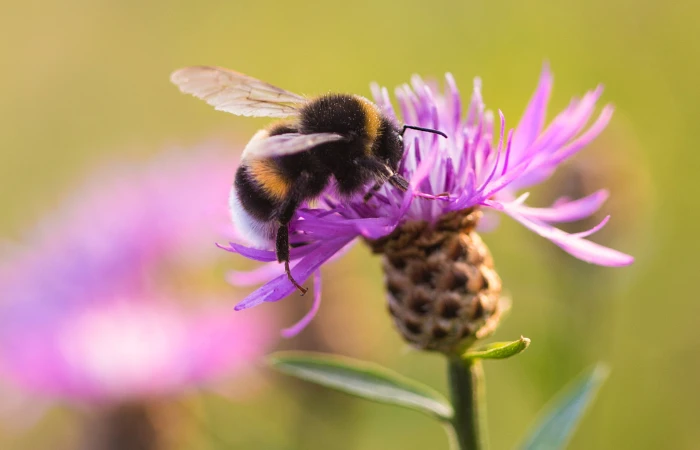The buzzing of bumblebees has long been the soundtrack to European summers, but this melody may fade to a hum if the threats they face aren’t addressed urgently.
European bumblebees, celebrated for their iconic black-and-yellow stripes, aren’t just pretty sights in our gardens; they’re powerhouse pollinators, essential to our ecosystems and food chains.
But these critical insects are confronting a two-pronged peril: a rapidly changing climate and an ever-shrinking habitat.
Diving deep into the history and future projections, Belgian researchers have stitched together a century’s worth of data, painting a disturbing picture for Europe’s 68 bumblebee species.
Bumblebees and honeybees are both vital pollinators, but they have distinct differences. Bumblebees are generally larger, rounder, and furrier, with a more robust appearance compared to the sleeker honeybees.
While both species live in colonies, bumblebee colonies are smaller, often housing only a few hundred bees, compared to honeybee hives that can host tens of thousands.
When it comes to honey, only honeybees produce honey in significant amounts that humans can harvest; bumblebees produce just enough honey for their own needs.
Behaviorally, bumblebees tend to be less aggressive than honeybees and have a different flight pattern, often described as more bumbling, hence the name.
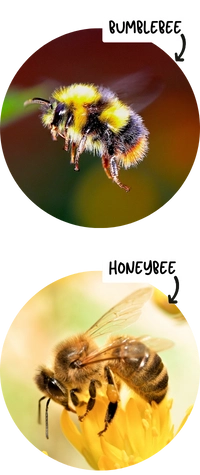
Guillaume Ghisbain, spearheading the study, has put forth alarming forecasts. “If our world continues its current trajectory, by 2080, regions from the Sahara Desert up to central France might become inhospitable for the widespread Bombus terrestris,” he said.
This potential shift would rob countless gardens of their most diligent pollinators.
Behind these distressing trends are human actions: our aggressive agricultural practices, our carbon-heavy lifestyles, and our unchecked urban expansion.
Intensive farming not only slices up bee habitats but also starves them by replacing their favored nitrogen-poor plants, like clover, with nitrogen-rich crops. And as our planet warms, droughts and heatwaves are turning once fertile lands into bee deserts.
In fact, a lab study showcased the deadly impact of extreme temperatures, with bumblebee colonies perishing in just an hour at 104°F.
The Economic Ripple Effect of Bumblebee Decline in Europe
Why should the average person be concerned about the decline of bumblebees? Beyond their ecological importance, bumblebees have a profound economic significance in Europe. Their tireless pollination activities underpin a sizable portion of European agriculture, which in turn feeds millions and fuels economies.
It’s estimated that pollinators, led by bees, contribute approximately €14.2 billion ($15.1 USD) to European agriculture annually. This isn’t just about honey. Bumblebees play a pivotal role in ensuring the successful cultivation of many crops. From apples, berries, and tomatoes to almonds and sunflowers, these crops rely on pollinators. A decline in bumblebee populations would invariably lead to a decrease in crop yields. This reduction doesn’t just mean pricier fruits and vegetables at the market, but it can also spell financial disaster for farmers who depend on these crops for their livelihoods.
Europe, with its rich agricultural traditions, is home to many regions where farming isn’t just an occupation—it’s a way of life passed down through generations. Take the sunflower fields of France or the olive groves of Spain; without pollinators, these landscapes, integral to European identity, would face existential threats.
Moreover, agriculture is a cornerstone of the European economy. The fallout from compromised crop yields would ripple across the value chain, from transportation and trade to retail and consumption. Job losses, increased import dependencies, and food security issues could be on the horizon if the trend of bumblebee decline continues unchecked.
In essence, the buzzing of bumblebees represents more than nature’s melody; it’s the hum of a robust and thriving European agricultural economy. Protecting these vital pollinators is not just an ecological imperative, but an economic necessity.
However, amidst this grim scenario, there are glimmers of hope.
Nature has always been resilient, and some bumblebees are displaying just that by migrating northward to cooler climates like Scandinavia. It’s a testament to their adaptability and an example of nature’s bid to rebalance.
But can we, as a society, also adapt and assist? Across Europe, many initiatives are emerging:
7 Pioneering Solutions and Innovations to Combat Bumblebee Decline
In the face of the bumblebee decline, scientists, entrepreneurs, and environmentalists across Europe are taking innovative steps to ensure these essential pollinators have a fighting chance in the changing world. Here’s a look at some groundbreaking solutions and innovations:
1. Bee Drones
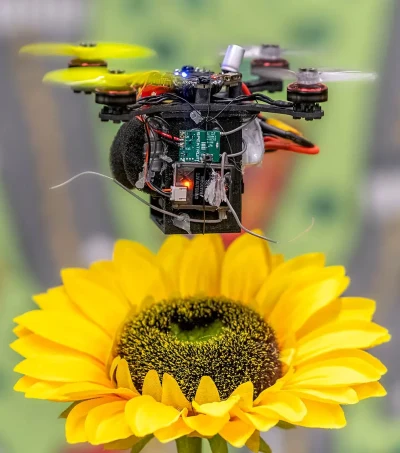
With advancements in technology, miniature drones are being developed to mimic the pollination activity of bees. Though still in their infancy, these bee drones could supplement natural pollination in areas where bumblebee populations have critically declined. These drones, equipped with patches of animal hair and gel, can pick up pollen from one flower and deposit it onto another, facilitating pollination.
2. Urban Beekeeping & Green Roofs

Cities like London, Paris, and Berlin are witnessing a surge in urban beekeeping. Residents and businesses are creating rooftop gardens and habitats specifically designed for pollinators. These ‘green roofs’ not only support bee populations but also improve air quality and offer urban cooling effects.
3. Digital Monitoring
Digital platforms and apps are emerging that allow citizens and scientists to track and monitor bee populations in real-time. By harnessing the power of citizen science, these platforms can gather large-scale data on bee health, activity, and numbers.
4. Bee Highways
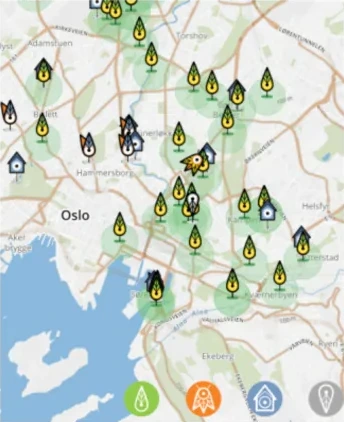
To provide safe passage and habitats for bees, certain regions are developing ‘bee highways.’ These are corridors rich in bee-friendly plants, stretching across towns and cities, ensuring bees have ample spaces to rest, feed, and reproduce.
5. Natural Pesticides

Recognizing the harmful effects of synthetic pesticides on bees, researchers are developing natural alternatives that deter pests without harming pollinators.
These biopesticides, derived from natural sources like bacteria or plants, offer an environmentally friendly solution to crop protection.
6. Bee Sanctuaries
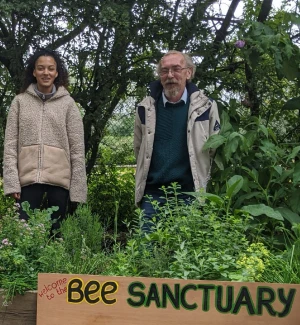
Some countries are dedicating large swaths of land as bee sanctuaries, ensuring protection from pesticides, and promoting the growth of native, pollinator-friendly flora. These areas act as refuges, bolstering bee populations and providing them with a safe haven.
7. Education and Advocacy

Grassroots movements across Europe are working tirelessly to educate the public about the importance of bees. Workshops, school programs, and community initiatives are turning the spotlight on pollinators, fostering a new generation of bee advocates.
In the face of adversity, the spirit of innovation shines brightest. As Europe grapples with the decline of its beloved bumblebees, these solutions and innovations represent hope, ingenuity, and a commitment to a sustainable future.
The story of European bumblebees is a poignant reminder of the delicate balance of our ecosystems. As they hover on the edge, the choices we make today will shape their tomorrow. By understanding their plight, appreciating their role, and adapting our actions, we can ensure that the hum of bumblebees remains a defining feature of European summers.







